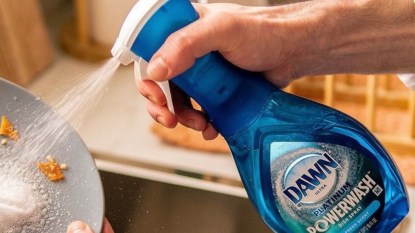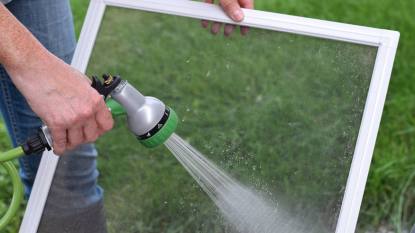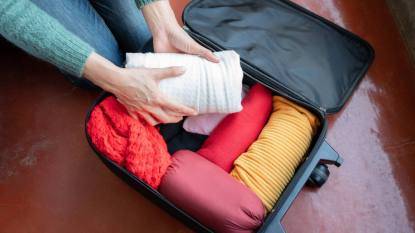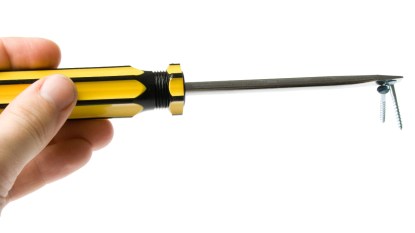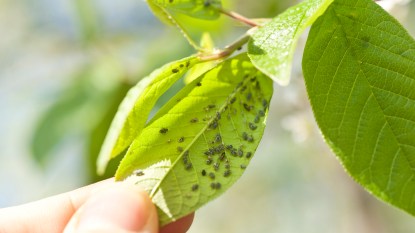Experts Share Why Using Too Much Laundry Detergent May Be Making Your Clothes ‘Dirty’
Using the right amount will save you $100s over the life of the appliance
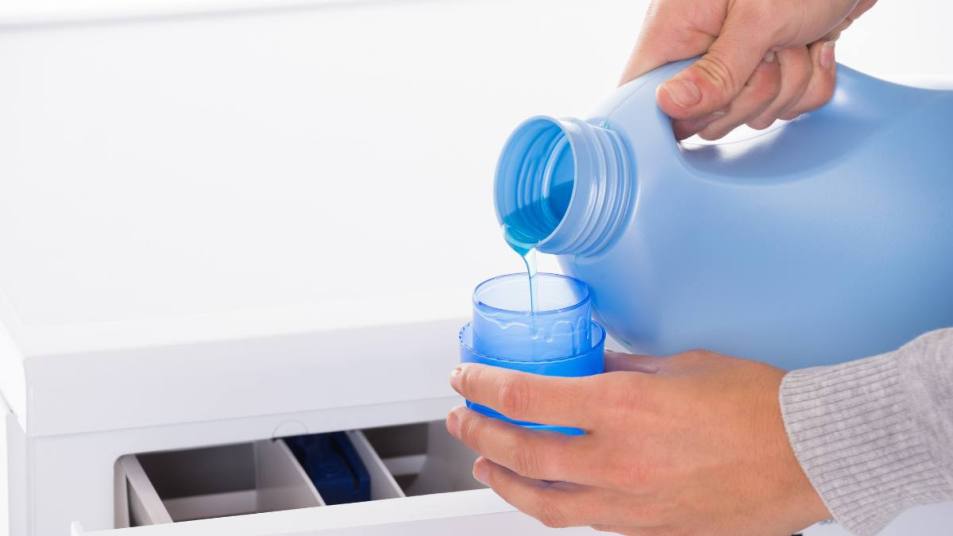
There’s nothing better than pulling an outfit straight from the washer and dryer and enjoying that freshly washed scent. But once you’ve got the clothes on, instead of feeling soft and clean, your jeans are uncomfortable and stiff, and your top smells a bit, well, funky. The culprit? You’re likely using too much laundry detergent. “We’ve all been programmed to believe we need to use more laundry detergent because more detergent equals more clean,” says laundry expert and social media content developer Melissa Dilkes Pateras, author of A Dirty Guide to A Clean Home. And detergent companies love when we use too much because then we need to buy more of their products! The truth is, you typically need far less than the manufacturer-recommended amount. So we consulted several experts to get their tips on how to know when you’re using too much detergent — and just how much laundry detergent to use for each load. Read on for their surprising tips.
How do you know if you’ve used too much laundry detergent?
1. You’ve got crunchy, dingy clothes and linens. The first and biggest sign of detergent overuse is stiff, hard clothing that doesn’t look clean, and it may not smell clean, either. “If you feel like you need fabric softener for your clothes, you’re using too much detergent,” says Patric Richardson, The Laundry Evangelist and host of The Laundry Guy on Discovery+. “Your brights aren’t bright and your whites aren’t white.“ The reason? Detergents use surfactants that grab the dirt in your clothes, and when you use too much, your washer can’t rinse it away, so the dirt and excess detergent gets deposited right back into your laundry, leaving it stiff and dingy, says Richardson.
2. You’ve got a smelly washing machine: Using too much detergent can leave your washer — and your laundry room! — smelling musty and unpleasant. You’ll also have some residue in your washer drum. “Residue builds up in the washing machine and over time it breeds bacteria, which makes your washer and the laundry room smell really musty and gross,” says Pateras. “Over time, this will also make your clothing smell because dirt will be attracted to the detergent residue in your clothing.” To prevent future detergent buildup, use the correct amount (see below for more on that), and clean your washing machine on a regular basis or at least every three months.
Related: How To Get Rid of Stubborn Washing Machine Smells
See Pateras’ Tiktok video on how to clean a washer here:
3. You’ve got plumbing or mechanical issues: Overusing detergent — especially in an High Efficiency (HE) machine which uses much less water than a non-HE washer — means your washing machine needs to work much harder to rinse and drain away all that soap, which over time can shorten the lifespan of your machine. “All that detergent can also clog up your pipes over time,” says Pateras, potentially leading to costly repairs if you need to call in a plumber.
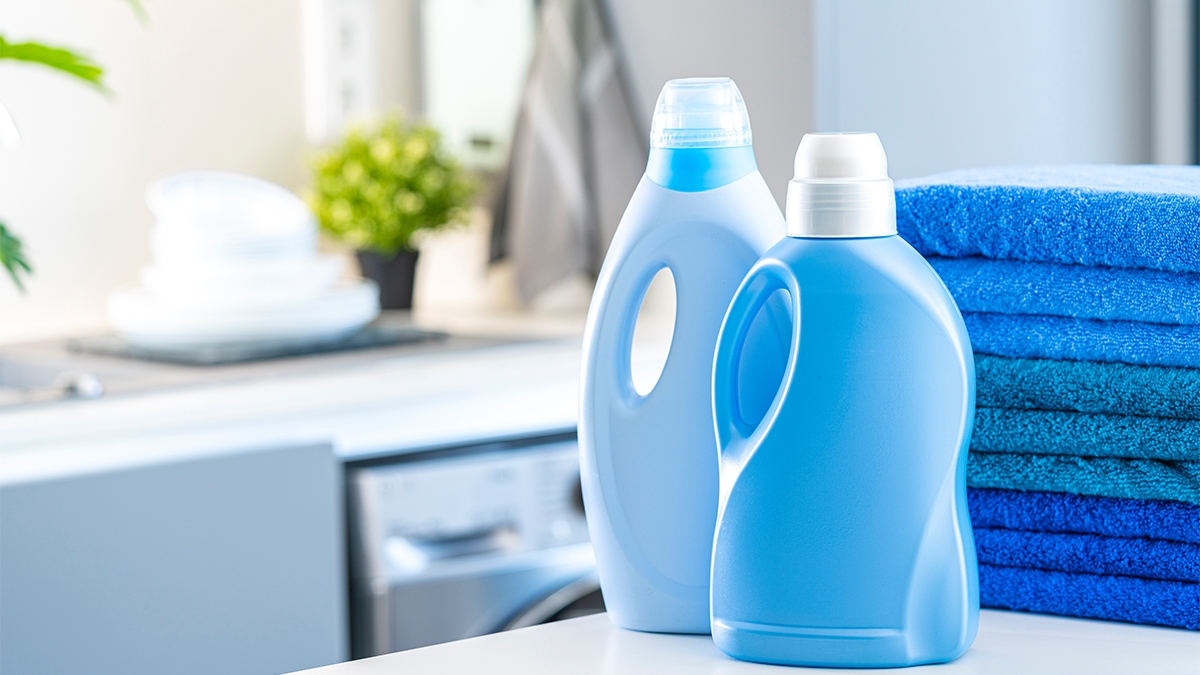
4. You’ve got skin irritation: That same residue buildup that makes your clothes look dingy can also lead to rashes and general skin irritation or itchiness if you have sensitive skin, says Muffetta Krueger, founder of Muffetta’s Domestic Assistants, who has more than 20 years of house cleaning and laundry experience. “The soap that should be rinsed out is instead sitting in the clothes and coming into constant contact with your skin and causing irritation.”
How to know how much laundry detergent to use?
Knowing how much detergent to use is a bit more complicated than just following the directions on the bottle for your detergent of choice. (Remember, detergent manufacturer’s love it when you use more!)
As a general rule, you need about two tablespoons of laundry detergent for a large load of laundry and about one tablespoon for a small-to-medium size load. The amount and type of detergent you should use for your laundry load can also vary based on things like soil level, water hardness, type of washing machine and detergent concentration among other things, says Angela Brown, the Savvy Cleaner, who spent twenty-five years as a house cleaner. Keep reading to learn when to adjust these numbers.
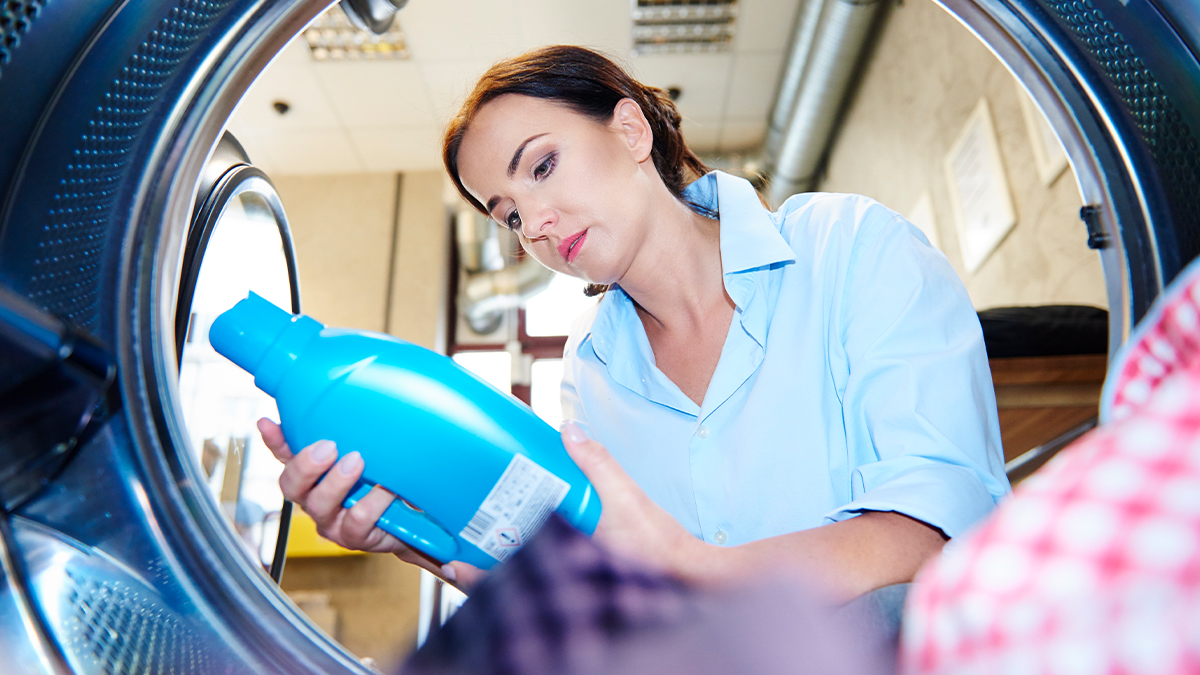
How much laundry detergent to use based on soil level
“The dirt, stains and soil on your clothes also affect the amount of detergent needed,” says Brown. Of course, “heavily soiled items need more detergent, while lightly dirty or worn items need less.” This means you can adjust the detergent amount about half a tablespoon up or down based on the soil level of the load.
How much laundry detergent to use based on water hardness
Because hard water contains minerals that can change the effectiveness of detergent, the hardness of your water supply can hinder performance. “You may need to use a bit more detergent in hard water areas to make up for this,” says Brown. For soft water, you may need to use a bit less detergent. You’ll know you have soft water if it’s hard to rinse the soap off when you wash your hands. If soap doesn’t suds up well at all in your home, you likely have hard water. Again, the most you should ever increase the amount by is about half a tablespoon.
How much laundry detergent to use based on washer type
An HE washer that’s Energy Star certified uses about 14 gallons of water per load, while a standard non-HE washer uses about 20 gallons of water per load. That difference means you’ll need more detergent to get your clothes clean in a non-HE machine, says Richardson. “Though it’s not very common to run across these machines any longer, use 1 ½ times the amount of detergent you would normally use,” advises Richardson, so 1 ½ tablespoons for a small-to-medium size load and 3 tablespoons for a large load.
How much laundry detergent to use based on detergent concentration
If you’ve seen those detergent labels that say 2X or 3X concentrated, that means the product contains less water and more cleaning agent, so concentrated detergents require less product per load, says Brown. You’ll need to adjust the amount you use based on the amount of concentration in the product. So, say, for a 2X product of your typical brand, you’d use half the amount — or, say, one tablespoon for a large load of laundry.
How much laundry detergent to use based on type of clothing
For baby clothes or more delicate work items that aren’t super-dirty, reduce the amount of detergent you use by about half a tablespoon, says Krueger. “The fabrics will rinse clean that way, and you’ll avoid having any excess detergent to irritate skin.” For really dirty clothes, boost the amount you use by that same half tablespoon, she says. If you’ve pre-treated a lot of stains in a load of laundry, you can also reduce the amount of detergent you’re using by half a tablespoon or so.
Pateras’ laundry detergent 101 video breaks down what too much detergent looks like
Laundry hacks to get your clothes super clean
1. Strip dingy towels and other linens
Laundry stripping went viral during Covid when everyone was concerned with getting their laundry as clean as possible — and it can really help to clean and whiten light-colored linens and towels, but it’s not recommended for darker fabrics and clothing in general because it will damage colors and weaken cloth fibers over time. The general formula to strip clothes is two parts powdered detergent, one part Borax and one part washing soda dissolved in hot water, which you then soak the fabrics in. This essentially creates a chemical wash that removes lingering buildup from the material.
For tips on how to strip dingy linens, see this viral Tiktok video:
2. Get smells out with the right products
Until the creation of products like Downey Rinse & Refresh (Buy from Amazon, $12.99) and Tide Clean Boost (Buy from Amazon, $12.97), it was impossible to get certain odors out of clothes, says Pateras (think body odor in activewear). After washing, smells would “rebloom” once the fabric was worn again. Now, to keep your clothing smelling fresh, follow directions on the product labels to banish laundry odors for good.
Related: The Freezer Trick That Removes Bad Smells From Clothes — No Washing Needed
3. Boost your detergent with baking soda
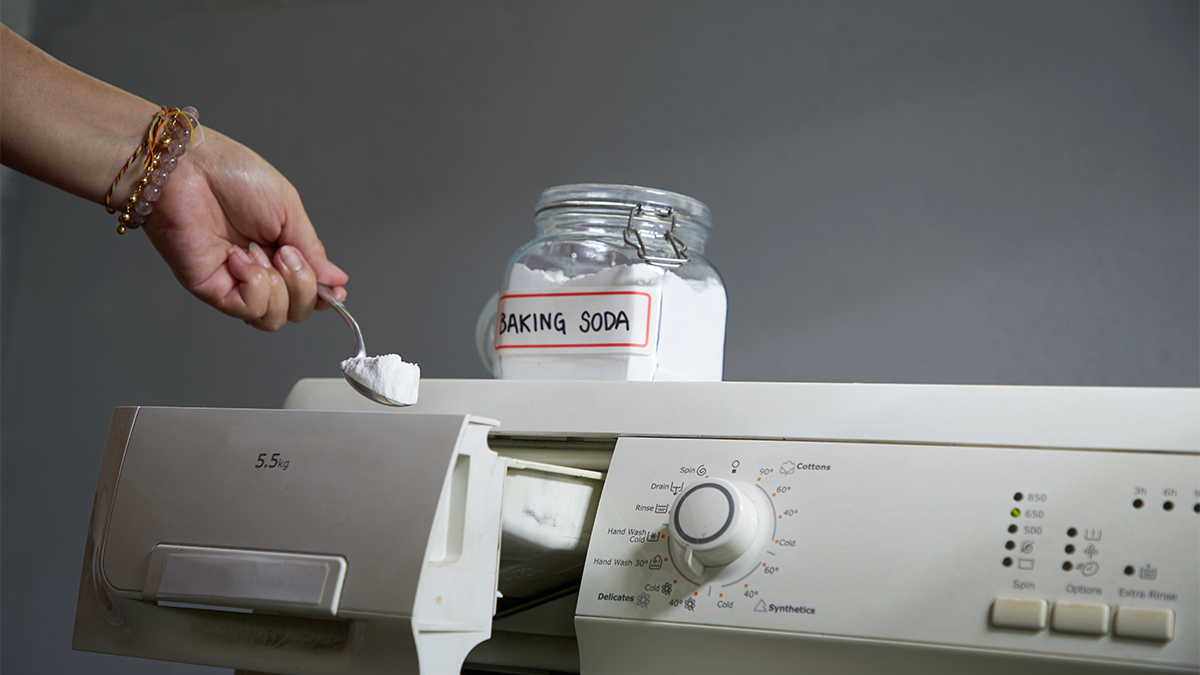
Want to boost cleaning power without overdosing on detergent? “Throw ½ cup of baking soda into the wash,” says Richardson. “It will soften the water, thus making the detergent work better, and your clothes will still rinse well.” This works especially well for sports clothes that are really dirty, he says.
4. Skip the fabric softener and dryer sheets
Just like using too much detergent, using fabric softener on your clothes can lead to build-up in the washing machine. It also coats your clothes and attracts dirt, says Pateras. And dryer sheets affect the sensors in your dryer, causing it to work less efficiently over time. “Essentially, your dryer will keep stopping because it doesn’t know the clothes are wet.” Instead, Pateras recommends using ¼ cup of white vinegar (in the fabric softener drawer) to soften clothes and wool dryer balls to reduce static.
5. Choose better detergent
Time after time, comparisons have shown Tide and Persil to be the best two detergents on the markets. And Costco’s Kirkland brand is the best value detergent, says Pateras. “Using less detergent means you can use a better brand,” she says.
6. Avoid overstuffing your washer
Clothing needs friction in addition to soap and water to get really clean, so your machine should never be more than ¾ of the way full for any load. Overfilling your washer means your clothes can’t move around to wash or to rinse clean.
Related: Experts Reveal Just How Long Can Clothes Sit Wet in the Washer Before Getting Moldy
See Brown’s video here for a tip on how to keep clothes cleaner after you’ve washed them:
For more laundry tips, click through the links below!
How to Unshrink a Sweater So It Fits Again: Laundry Pros Reveal the Steamy Secret
Laundry Hacks for Removing Odors, Fluffing Towels, and Never Losing a Sock Again


